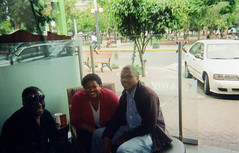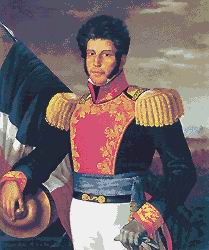Like Barack Obama, Mexico's president Vicente Guerrero tried too damn hard to please the very people who disliked him as he received stubborn, heated political opposition because of his African ancestry. As Obama received more death threats than any other US president, Guerrero's term, on the other hand, didn't even last a year before conservatives threw him out of office, convicted him of treason, and put him to death.
Vicente Guerrero, like Barack Obama, was inexperienced when it came to political leadership. Obama, at least, served as a senator before being formally elected president. Guerrero, on the other hand, with the aid of a general and a politician, bullied his way into the presidency by staging a coup d'etat years after he freed Mexico from Spanish rule on the battlefield. Obama, unlike Guerrero, is Harvard University educated. Guerrero did not have a formal education or the social grace of Barack Obama.





